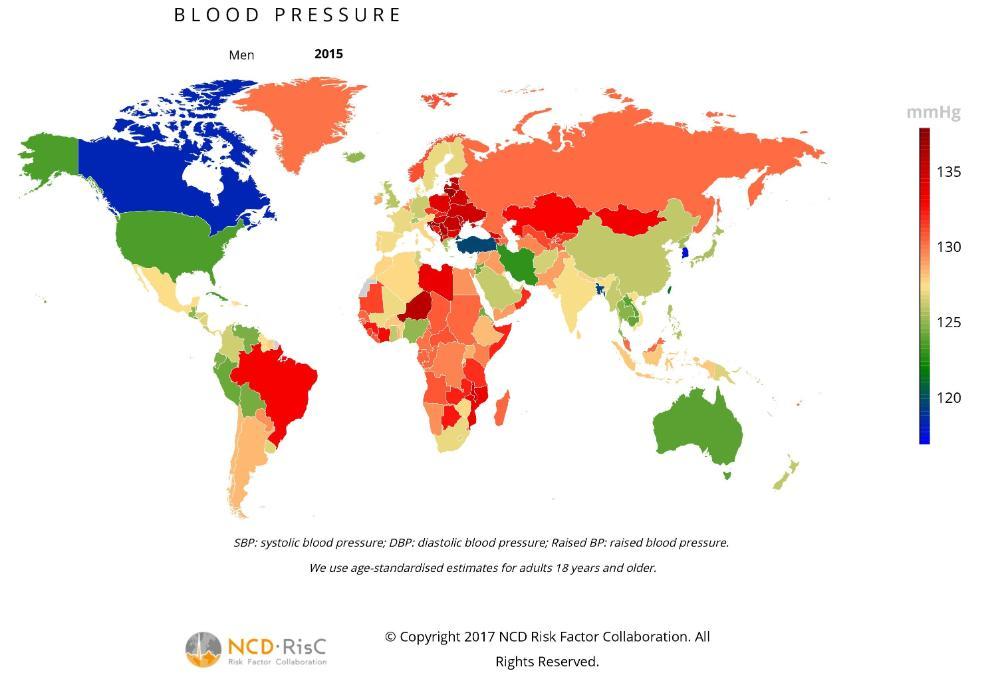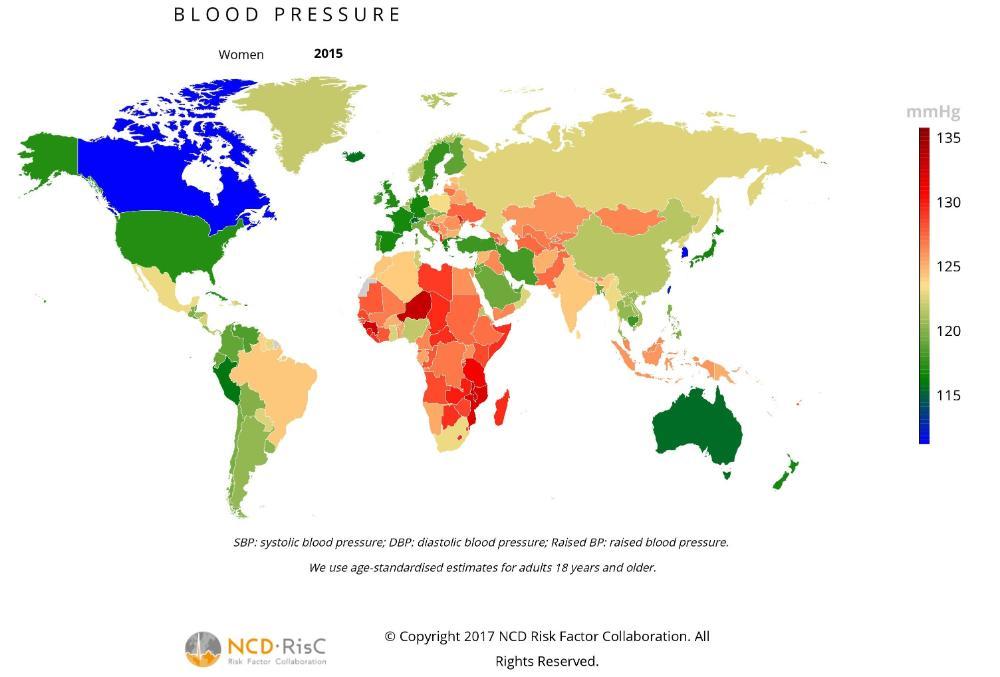A billion people have high blood pressure worldwide. This is more than double the number 40 years ago.
The problem shifted from wealthy western countries to the developing world.
The figures come from research by the NCD Risk Factor Collaboration (NCD-RisC published in science journal, The Lancet, in November 2016.
Why is high blood pressure becoming more common worldwide?
The rise from 594 million people in 1975 to over 1.1 billion in 2015 is thought to be due to a growing and ageing population, with the biggest increases seen in South Asia and parts of Africa. More than half of those with high blood pressure live in Asia, including 226 million people in China and 199 million in India.
Why is the proportion of adults with high blood pressure falling in western countries?
While high blood pressure becomes more common worldwide, some countries have seen a fall in the proportion of adults with high blood pressure in recent years. The UK now has some of the lowest rates, along with Canada, Australia and parts of Europe.
This is likely to be due to the salt reduction work that has been ongoing in the UK since the early 2000s, alongside better diets which include more fruit and vegetables, as well as better healthcare, whereby raised blood pressure can be detected early and treated with blood pressure-lowering drugs.
How common is high blood pressure around the world?
The maps show the average systolic blood pressure readings for men and women around the world in 2015. The proportion of adults with high blood pressure varies in different countries.


See how the numbers in different countries have changed since the 1970s.
Images published with kind permission from the NCD Risk Factor Collaboration (NCD-RisC).
NCD Risk Factor Collaboration (NCD-RisC). Worldwide trends in blood pressure from 1975 to 2015: a pooled analysis of 1479 population-based measurement studies with 19.1 million participants. Lancet 2017, 389:37-55
What can be done about high blood pressure in the developing world?
As the problem of high blood pressure is shifting to the developing world, the researchers called for better policies to help the countries who are worst off, focusing on reducing salt intake, making fruit and vegetables affordable and improving detection and treatment with blood pressure lowering drugs.
Encouragingly, the improvements in the western world show that with a good salt reduction programme, access to healthcare and a healthy diet, it is possible to lower a nation’s numbers.
Blood pressure facts from around the world
- The largest rises in high blood pressure have been in South Asia, including in Bangladesh and Nepal, and Sub-Saharan Africa, including in Ethiopia and Malawi.
- Around a third of women have high blood pressure in most countries in West Africa, including Niger, Chad and Mali.
- The highest average blood pressures in the world in 2015 were 138 mmHg (systolic) for Slovenian men and 133mmHg for Nigerien women.
- High blood pressure remains a serious problem in Central and Eastern Europe, including Slovenia, Lithuania and Croatia.
- Britain has the lowest rates of high blood pressure in Europe, with around one in eight women and one in five men with high blood pressure, compared to more than a third of men in several central and eastern European countries.
- The lowest average blood pressures were about 118mmHg (systolic) for men and 111mmHg for women in South Korea and Canada in 2015.
- The lowest rates of high blood pressure in the world are in Canada, the UK, Australia, the USA, Peru, South Korea and Singapore.
- Men have higher blood pressure than women in most world regions.
To find out more about salt reduction programmes around the world, please visit www.worldactiononsalt.com
May Measurement Month
In May 2017, 2018 and 2019, campaigners around the world set out to measure as many people’s blood pressures as possible in the first ever May Measurement Month , one of the biggest screening programmes in history. Volunteers set up screening centres in imaginative locations including city centre squares, shopping malls and railway stations, and found many of those living with undiagnosed high blood pressure.
The campaign was led by the International Society of Hypertension and the World Hypertension League, and The British and Irish Hypertension Society (BIHS) in the UK, and supported by Blood Pressure UK, who aimed to raise awareness of high blood pressure and the 10 million lives lost every year to due to the health problems it causes.
MMM builds on the World Hypertension League’s (WHL) established World Hypertension Day, held on 17 May each year, with health professionals volunteering to offer free blood pressure measurements at local screening sites around the world.
After three successful years, over 4.2 million people were screened in almost 100 countries and almost 1 million people identified with untreated or inadequately treated hypertension. MMM was forced to pause in 2020, but is returning in 2021.

